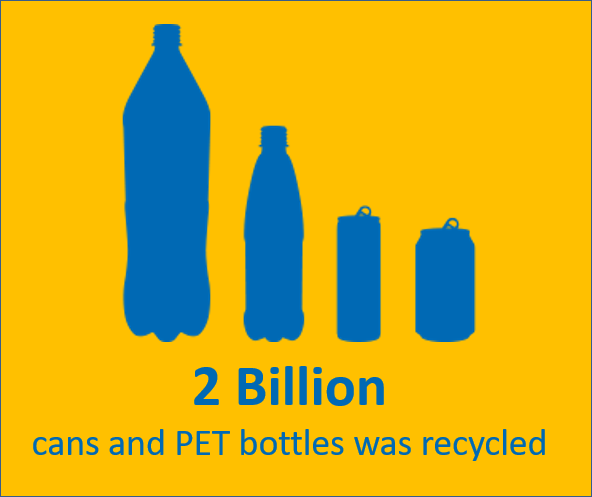Yes, what do we want instead? We can’t always replace plastic with a renewable material. Then what about recycled plastic, more sustainable plastic that is efficiently recovered and that comes from an organised collection system? Does that sound a bit better?
Coca-Cola is in the news with their new line of bottles entirely made from recycled PET. Fantastic! Coca-Cola Sweden is during 2020 switching to only use PET bottles with 100% recycled material for their leading brands, Coca-Cola, Fanta, Sprite and Bonaqua, 40 SKUs.

This is not a small thing as using recycled material in food contact is a complex mission surrounded by of rules and regulations. The Swedish deposit system really helps here as it makes the recycling stream of PET bottles relatively pure.
Beverage bottles, and cans, are here collected and recycled separately and can in theory be turned back into new cans and bottles. Today around 85% of the distributed bottles are returned and recycled. Normally recycled PET tends to be cloudy due to unintended mixes and potentially tainted by other random plastic in the recycle process. This is avoided in a controlled stream like this.
In a recent report from McKinsey, “The drive toward sustainability in packaging—beyond the quick wins”, this is discussed, among other things. The report concludes that to successfully address the recyclability and waste challenges more collaboration is needed along the value chain. To manage increased recycling new infrastructure needs to be built and more closed system must be employed.

A closed and dedicated deposit system clearly makes recycling more efficient as it is separate and, closed. The Swedish deposit system is managed by Returpack, an organisation owned jointly by retailers and fillers together. When the deposit system was created also packaging converters were involved which makes it a good example of an efficient recycling structure.
Another brand owner who is blazing new trails in this field is Nestlé. The company is seriously investing in the development of new packaging concepts in their effort to have 100% of its packaging recyclable or reusable by 2025. The newly inaugurated Nestlé Institute of Packaging Sciences is unique and aims to support the process. The Institute is going to do its bit of development of functional and environmentally friendly packaging solutions and to address plastic packaging waste.

Nestlé is now investing a staggering €2 billion to explore the possibilities to widen the market for food-grade recycled plastics. The Institute will be involved but the main investment will be in driving the market for food-grade recycled plastics by boosting demand and by being ready to pay a premium.
They are now demanding 2 million tons over a period of time and are willing to pay for it, to create a market. Brilliant!
Plastic is at present needed, especially in the food industry to minimise food waste, and it is possible to create a circular economy also for plastics. To get there a system for collecting and recycling plastic must be in place. But there needs to be a corresponding demand as well. Today it is more expensive to use recycled materials than virgin. But with a higher demand and larger volumes the price should go down and thereby generate more demand.
Hopefully a process that creates a virtuous cycle spinning us towards a circular and healthy economy.
These are great examples of steps in the right direction to increase demand for recycled plastic materials. This will also drive the development of efficient systems for processing.
But, in the end, the consumers are going to do a big part of the job. We must not forget to inform and motivate to sort and return the empty packaging through this efficient system.



